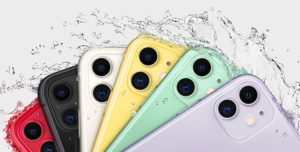An artificial intelligence technology called “deepfake” may be the next big threat we face as a society.
Consider this video clip of Facebook CEO Marc Zuckerberg saying some outlandish things. You might think it is real — but it’s a deepfake. It’s his image, and it sure sounds like him, but he never actually made that speech. You may feel duped. You may feel stunned. “Can’t be,” you might think. “That has to be Zuckerberg talking.”
Wrong. Deepfakes are a very real threat. The tech got its start in the entertainment world and is fast becoming a fixture of dirty politics.
The term “deepfake” began circulating in 2017. In its crudest form, it simply put someone else’s head on another person’s body to fake out the viewer.
However, it has become more sophisticated and has expanded from photography to video. Now deepfakes can substitute false speech with real video footage. Who knows where this will go next?
What this means is we can’t always be sure whether what we are seeing is real or fake. This disturbing technology will continue to spread. Its use is still relatively infrequent, but the day may come when we won’t be able to tell what is real any longer — and it could come soon.
Deepfakes and the 2020 Elections
Deepfakes almost certainly will pose a growing problem for the 2020 presidential elections, most likely on both sides. There appears to be no solution in sight — no way for viewers to be certain whether video and audio recordings are real or fake.
Computers using AI can blend different tracks in a way that the average person won’t be able to tell the difference between the original and the fake. The quality of the deepfakes continues to get better and better. Once a deepfake is released to the Internet, it can travel like wildfire. When it comes to American politics, this could have disturbing consequences.
Think about all the smartphone videos shown on the news today. We won’t be able to know whether what we are watching is real or fake. This technology can hurt the reputation of an innocent person. It can damage a company. It can reduce its investment value and much more. It can interfere with normal election activities and impact governments.
Deepfakes Can Destabilize Society
Deepfakes threaten to be a major destabilizing factor, and we don’t yet know how to battle them. In many cases we don’t even know how to spot them. As AI technology gets better, it may become impossible to depend on anything we see — and there are no specific laws to protect us from this yet.
We always have counted on our senses to understand the world around us — sight, sound, smell, touch and taste. The existence of deepfakes means we no longer can depend on our senses.
Technology that serves to deceive should be illegal, but like many tech innovations, there are no targeted laws against it, which means we have no protection — not yet anyway.
Over time it’s likely that we will develop new AI technology to identify and label deepfakes, but until then we are on our own. That means as a society we are susceptible. We must be very careful not to fall victim to deepfake manipulation.
Memorex ran a series of television commercials back in the 1980s, asking the question, “Is it live or is it Memorex?” Now that cute catchphrase suggests a whole new meaning.
In the 2020 presidential campaign, we should expect deepfakes to play a large role. They will be circulating online, and they will spur comments from both sides, even though they are only make-believe.
Deepfake Distortion
We must understand that a great many of our experiences could be susceptible to deepfake alteration. Acknowledging the problem is essential if we are to survive this real and growing threat.
It’s very unsettling that we might have no way of knowing what is real. Deepfakes pose a great danger to each and every one of us, no matter where we are on the political spectrum.














































Social Media
See all Social Media